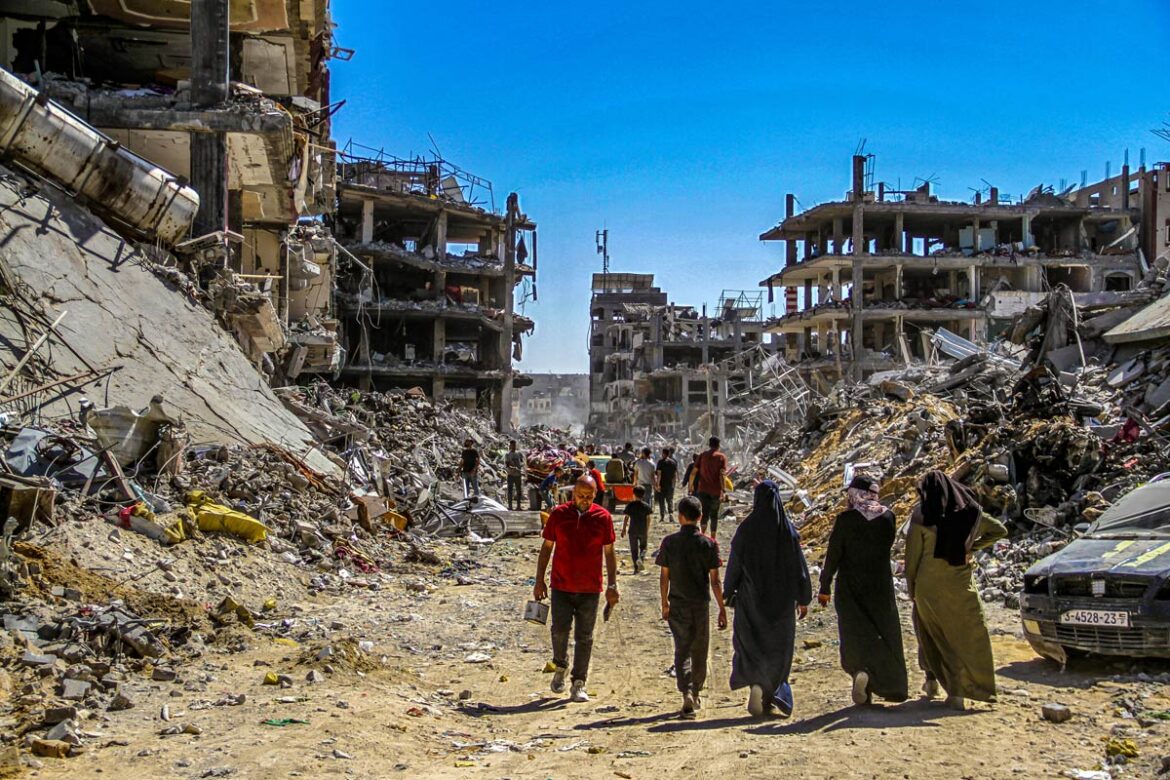By Desmond Nleya
The 15-month-old-conflict in Gaza between Israel and Hamas finally ended on 19 January 2025, at least for now.
This truce, facilitated by mediators from the United States, Qatar, and Egypt, involved a phased hostage exchange, with Hamas releasing Israeli captives in return for Palestinian prisoners. Despite delays and mutual distrust, the ceasefire commenced, offering a glimmer of hope for regional stability.
The cessation of hostilities has allowed for the return of displaced Palestinians to northern Gaza, a region heavily damaged during the conflict. The United Nations reported that over 200,000 Palestinians moved north in Gaza.
This movement is crucial for families seeking to rebuild their lives amidst the ruins. Additionally, the truce has enabled the entry of humanitarian aid into Gaza, addressing critical shortages of food, water, and medical supplies. Israel has permitted hundreds of aid trucks into Gaza daily, a positive step toward alleviating the dire humanitarian situation.
But what is the impact of this truce?
The ceasefire’s impact on regional security is multifaceted. On one hand, it provides a temporary halt to violence, offering a window for diplomatic engagement and potential long-term solutions. On the other hand, analysts caution that if groups like Hamas and Hezbollah are not thoroughly dismantled, the conflict may inevitably resume, making current ceasefires potentially dangerous temporary pauses.
Furthermore, the conflict has led to significant internal and external political shifts. Despite international criticism and allegations of genocide against Israel, Prime Minister Netanyahu claims that Israel achieved its objectives, including weakening Hamas and reducing regional threats from Iran-backed groups like Hezbollah. However, Hamas remains partially intact, and the overall stability and long-term peace in the region remain uncertain.
International Dynamics
The ceasefire has elicited varied international responses. The United States has consistently backed Israel, emphasizing its right to self-defense, while also facing pressure to address the humanitarian crisis in Gaza. The involvement of countries like Qatar and Egypt in brokering the truce underscores the complex geopolitical interests at play. Additionally, Israel’s ban on the UN’s Palestinian relief agency, UNRWA, has been criticized by the agency’s head, Philippe Lazzarini, who warns that it jeopardizes peace efforts and impacts Palestinian lives.
What are the Challenges Ahead?
Despite the ceasefire, significant challenges persist. The humanitarian situation in Gaza remains dire, with severe shortages of essential resources. The sustainability of aid is questionable without a lasting solution to the underlying tensions. Moreover, the deep-rooted mistrust between the conflicting parties poses a substantial barrier to long-term peace. The international community must remain vigilant, advocating for constructive dialogue and holding all parties accountable for peace efforts.
The Gaza ceasefire represents a critical juncture with significant implications for regional security and stability. While it offers immediate humanitarian relief and a pause in active conflict, the path to enduring peace requires addressing the underlying causes of the conflict, sustained diplomatic engagement, and comprehensive strategies to ensure lasting security and coexistence. The global community’s role in supporting these efforts is indispensable for a stable and peaceful Middle East.
Guns go silent after 469 days in Gaza. Will the truce hold?
95


